
The Grounds Guys provide a comprehensive guide on overseeding a lawn to ensure lush growth.
|
Lawn care is an integral part of exterior home maintenance, and a healthy, vibrant lawn can add beauty and value to any home. Regardless of how much time you spend in your yard, your grass can begin to look thin and brown as it ages, and the best way to restore its appearance and vitality is with overseeding. Read on to learn everything you need to know about how to overseed a lawn from the landscape experts at The Grounds Guys®.
Table of Contents:
What is Overseeding?

Overseeding is a method of seeding over top of an existing lawn. As your lawn continues to age the production rate of new grass blades begins to slow down, and in this weakened state, weeds can start to take over.
The two main reasons for overseeding lawns are:
- The lawn has become thin, brown, and patchy.
- Warm-season grass which goes dormant in the winter may be overseeded with cool-season seed for year-round growth.
When is the Best Time for Overseeding Lawns?
When to overseed lawn depends on the type of seeds you are planting. In northern climates overseeding should be performed 45 days before the planting zone’s first frost. This is ideal for strengthening a weak or thinning lawn. Strengthening turf in the spring is best done when the threat of all freezes has passed their region.
Those living in southern climates with warm-season grasses should overseed to obtain winter color, when temperatures have dropped below 65 degrees at night consistently. Prepare the area properly prior during elevated soil temperatures to promote germination.
How to Overseed a Lawn
You will need:
- Grass seed
- Enriched soil
- Lawnmower
- Rake
- Seed spreader
- Sprinkler
Step One: Mow and Rake
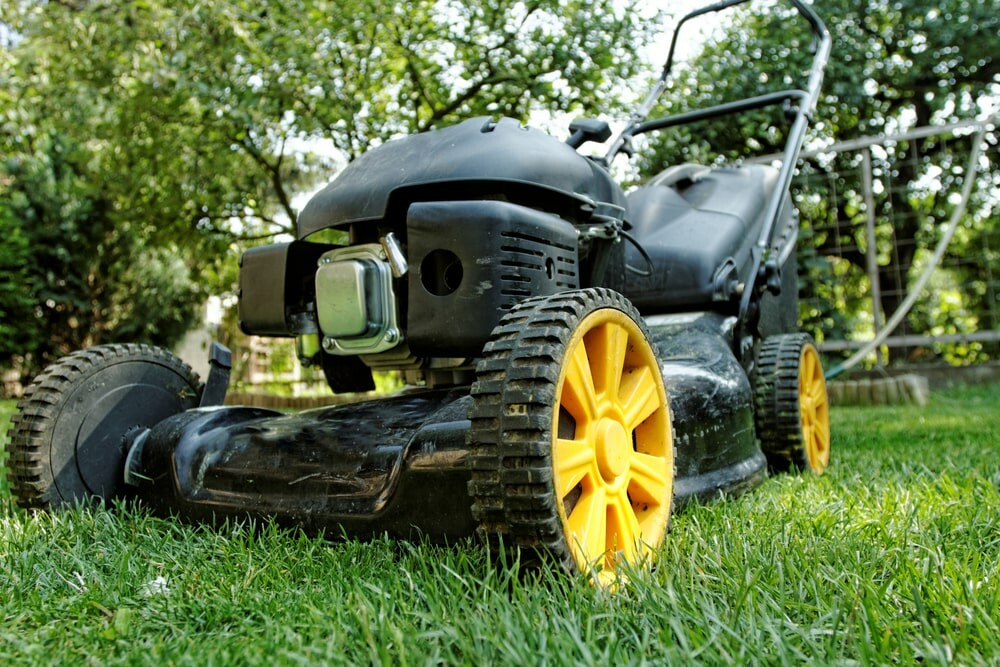
Begin the overseeding process by mowing your lawn on the lowest setting and bagging the clippings. Next, rake the lawn to remove any loose grass or debris, further exposing the soil to accommodate the new seed.
Step Two: Amend the Soil
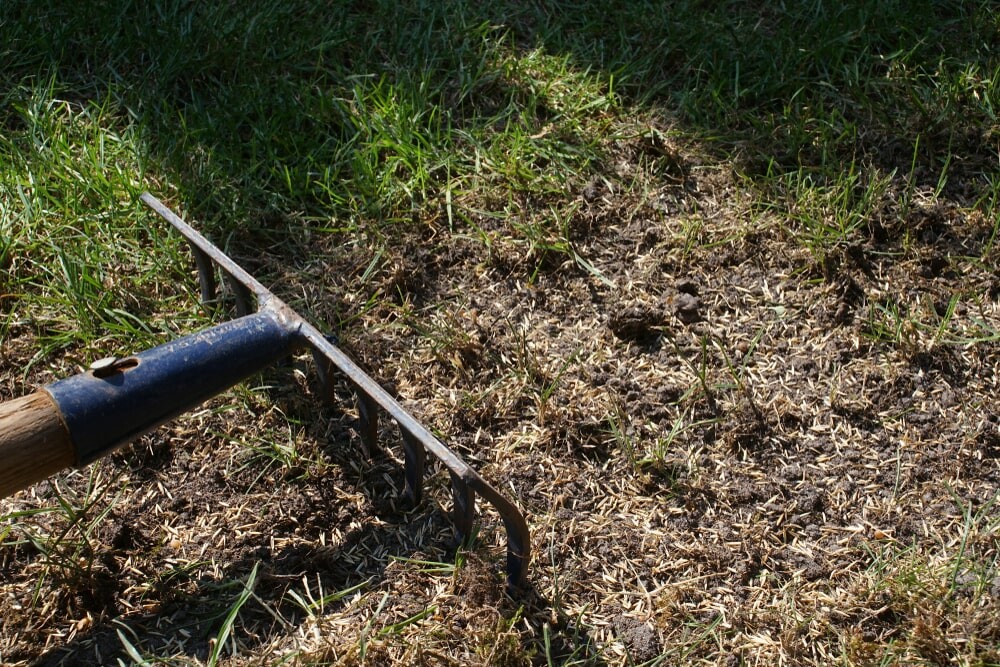
Add a thin layer of one-quarter of an inch or less of enriched soil over the existing grass and gently rake it in to provide a healthy environment for the new seeds to settle into.
Step Three: Add the Seeds
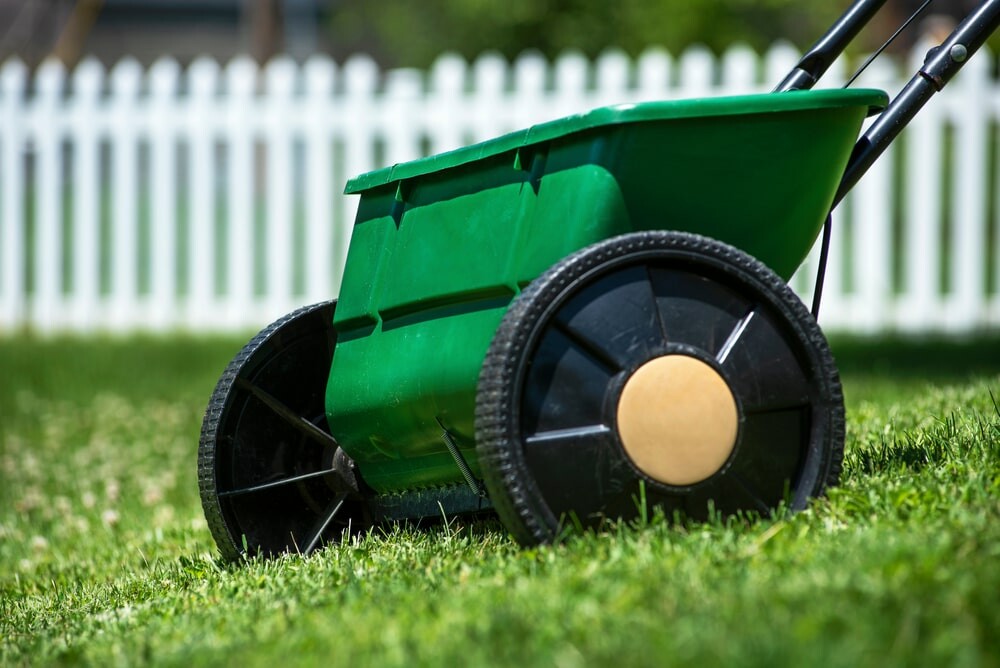
Fill the seed spreader and adjust the settings according to the directions on the label, and apply over the entire area, refilling as needed. For smaller areas, you may want to use a hand spreader while a drop or broadcast spreader is more suitable for larger lawns.
Step Four: Feed the Grass
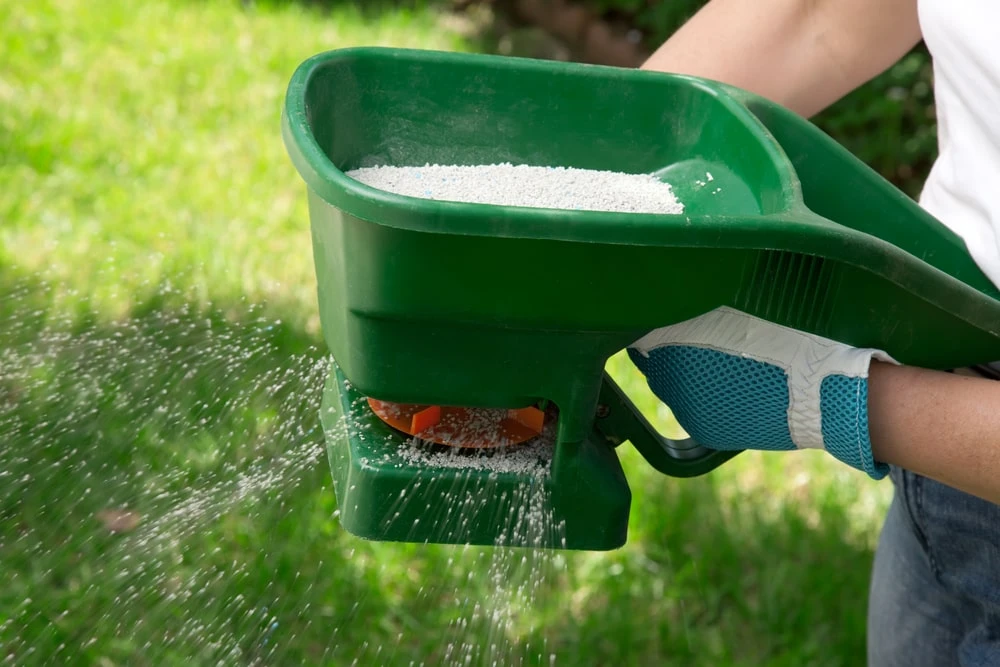
Choose and apply a fertilizer with concentrations that are suitable for new grass, and which contain phosphorus to support root growth and nitrogen for enhanced top growth and greening.
Step Five: Water the Lawn
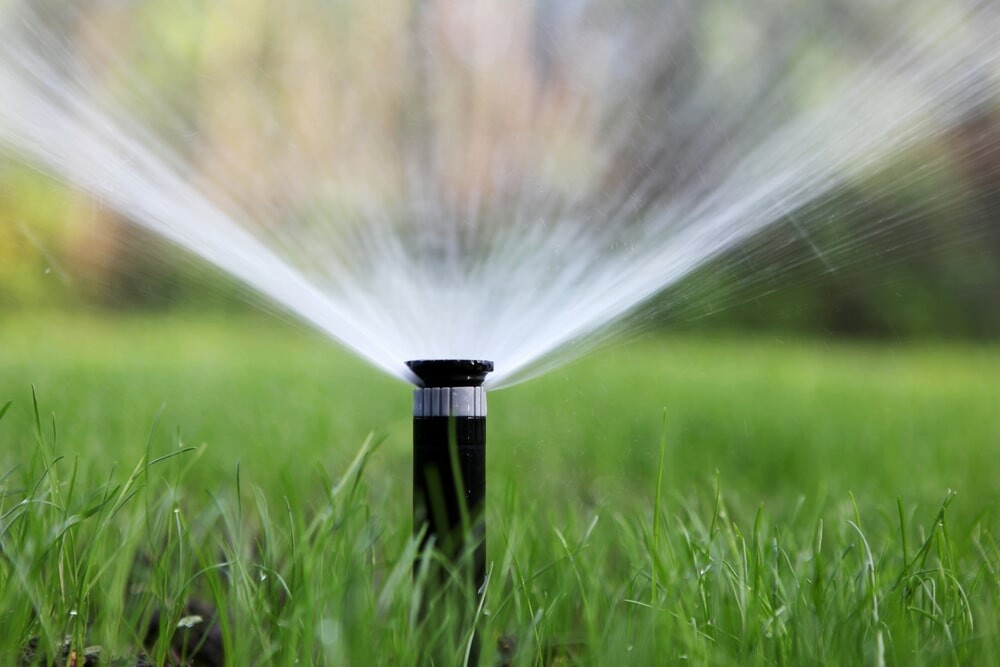
Ensure the seeds and soil remain consistently moist, watering once or twice a day until the new grass has reached the height of the old grass. From there, water your lawn as needed to prevent wilting to establish a deep, healthy root system. Refrain from mowing the grass until the lawn has filled in and the blades are at least one-inch high.
For all your residential and commercial lawn and garden needs including overseeding, request a free job estimate online and let The Grounds Guys know how we can help.
FAQs About Flowers about Overseeding the Lawn
Our 200 franchise locations across the U.S. and Canada share a common goal - use our years of experience and expertise to help you bring the vision for their property to life. This includes answering questions you have about landscaping and lawn care. Below are answers to some of the most frequently asked questions about overseeding grass.
Is overseeding good for an aging or patchy lawn?
Overseeding your lawn is the process of planting new grass seed directly over existing turf without completely removing the old lawn. This introduces fresh grass plants into areas where older grass has become thin, patchy, or weakened over time. The process is particularly effective for aging lawns because grass plants naturally slow their growth and reproduction as they mature, creating opportunities for weeds and bare spots to develop.
Key benefits of overseeding include:
- Thickening sparse areas where grass has died or thinned out due to disease, pests, or foot traffic
- Improving lawn density to create a fuller, more uniform appearance
- Enhancing disease resistance by introducing newer grass varieties with improved genetics
- Crowding out weeds naturally, as thick, healthy grass prevents weed seeds from establishing
- Restoring color and vitality to lawns that have become dull or discolored
Pro Tip: For warm-season lawns in southern regions, overseeding grass with cool-season varieties provides winter color when the primary grass goes dormant. This can create a green lawn year-round instead of the typical brown grass you’re used to seeing during colder months.
When is the best time of year to overseed my lawn?
The best time for overseeding lawns depends entirely on the climate zone and the type of grass. Successful overseeding requires matching seed germination with favorable growing conditions.
For northern climates with cool-season grasses:
Overseed in the spring or fall. Fall is generally preferred because cooler temperatures and increased rainfall create ideal germination conditions.
- Fall overseeding: Plant 45 days before your area's first expected frost date.
- Spring overseeding: Wait until all danger of freezing has passed and soil temperatures consistently reach 50–60°F.
For southern climates with warm-season grasses:
Typically, overseed between late September and November, depending on your location. Your warm-season grass should be entering dormancy for best results.
- Winter color overseeding: Begin when nighttime temperatures consistently drop below 65°F.
Check your USDA hardiness zone to determine the best time for overseeding in your area. Unusual temperature fluctuations can affect timing, so be sure to monitor local weather patterns as your temperature window approaches. Avoid overseeding grass during peak summer heat or during active growing seasons when existing grass is competing heavily for resources. The new seedlings need reduced competition to establish successfully.
Pro Tip: Soil temperature is more important than air temperature for seed germination! While your local weather can indicate when the time is right for overseeding your lawn, check soil temperatures for the most reliable results.
What are the key steps of the overseeding process?
Successful lawn overseeding requires careful preparation and consistent follow-through. Each step builds on the previous one to create optimal conditions for new grass establishment.
Preparation Phase:
- Mow existing grass to the lowest setting your mower allows, and bag all clippings to prevent them from blocking sunlight to new seeds.
- Rake thoroughly to remove debris, dead grass, and thatch buildup that could prevent seed-to-soil contact.
- Test and amend soil if needed (most grass seeds germinate best in soil with a pH between 6.0–7.0).
Seeding Phase:
- Apply enriched topsoil in a thin layer (¼ inch or less) to provide nutrients and improve seedbed quality.
- Spread grass seed using a broadcast or drop spreader. Follow package directions for coverage rates.
- Lightly rake the seeded area to ensure good seed-to-soil contact without burying seeds too deeply.
Establishment Phase:
- Apply starter fertilizer containing phosphorus for root development and nitrogen for early growth.
- Water immediately and maintain consistent moisture with light, frequent watering (1–2 times daily).
- Monitor germination. The first sprouts typically appear within 7–21 days, depending on grass type and conditions.
Maintenance Phase:
- Continue daily watering until new grass reaches the height of the existing turf.
- Gradually reduce watering frequency while increasing duration to encourage deep root growth.
- Wait to mow until new grass blades are at least one inch tall. Mow at a higher setting initially.
Full establishment typically takes 6–8 weeks, during which foot traffic should be minimized to avoid damaging developing roots.
Ready to learn more about overseeding? Contact a landscaping professional near you for expert overseeding services that ensure optimal results for your lawn.
TThis article is intended for general informational purposes only and may not be applicable to every situation. You are responsible for determining the proper course of action for your home and property. The Grounds Guys are not responsible for any damages that occur as a result of this blog content or your actions. For the most accurate guidance, contact The Grounds Guys location nearest you for a comprehensive, on-site assessment.